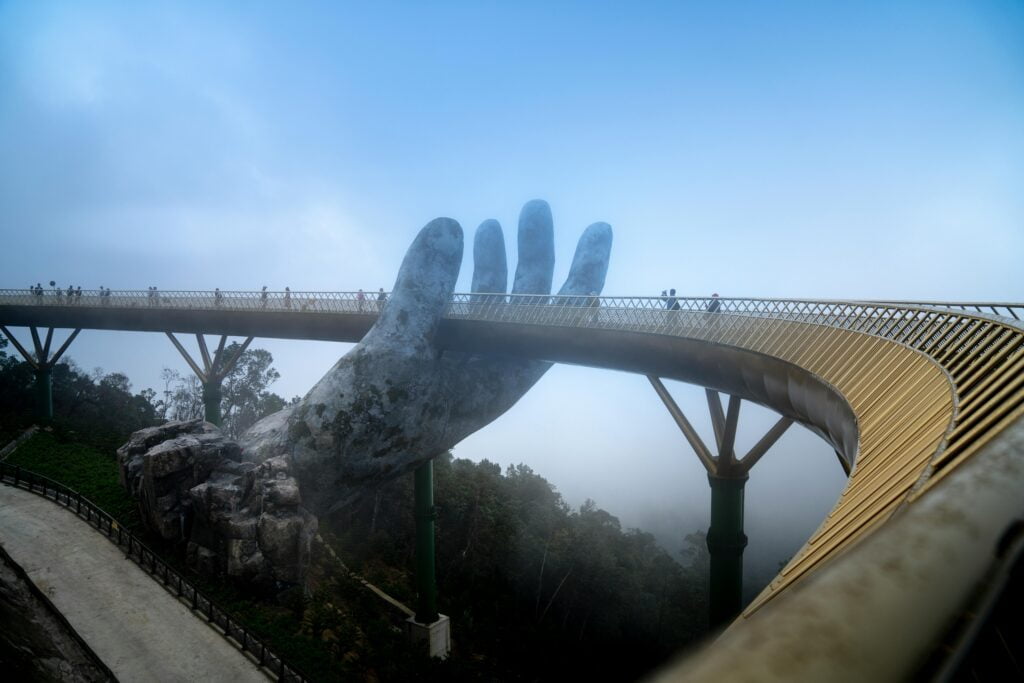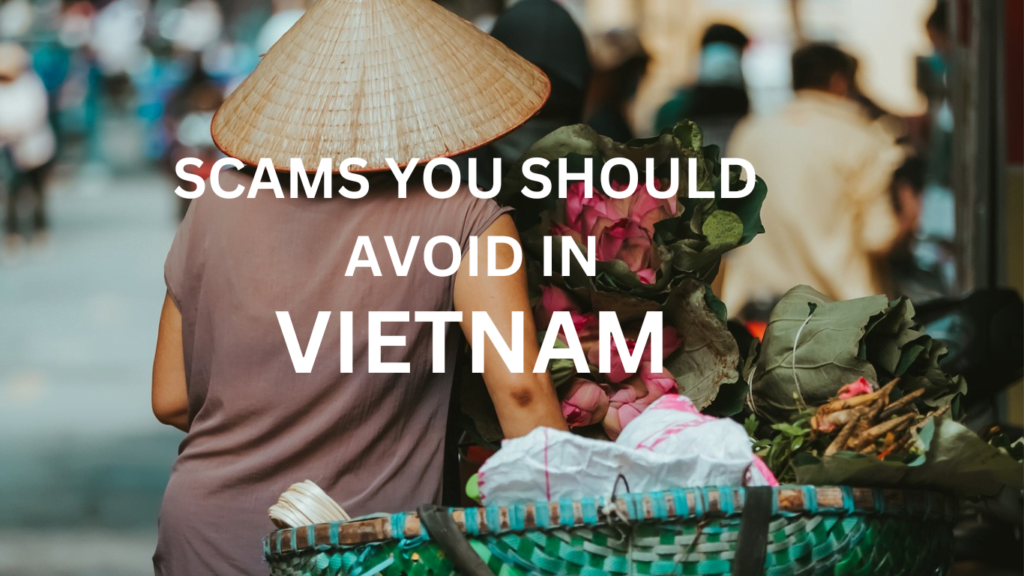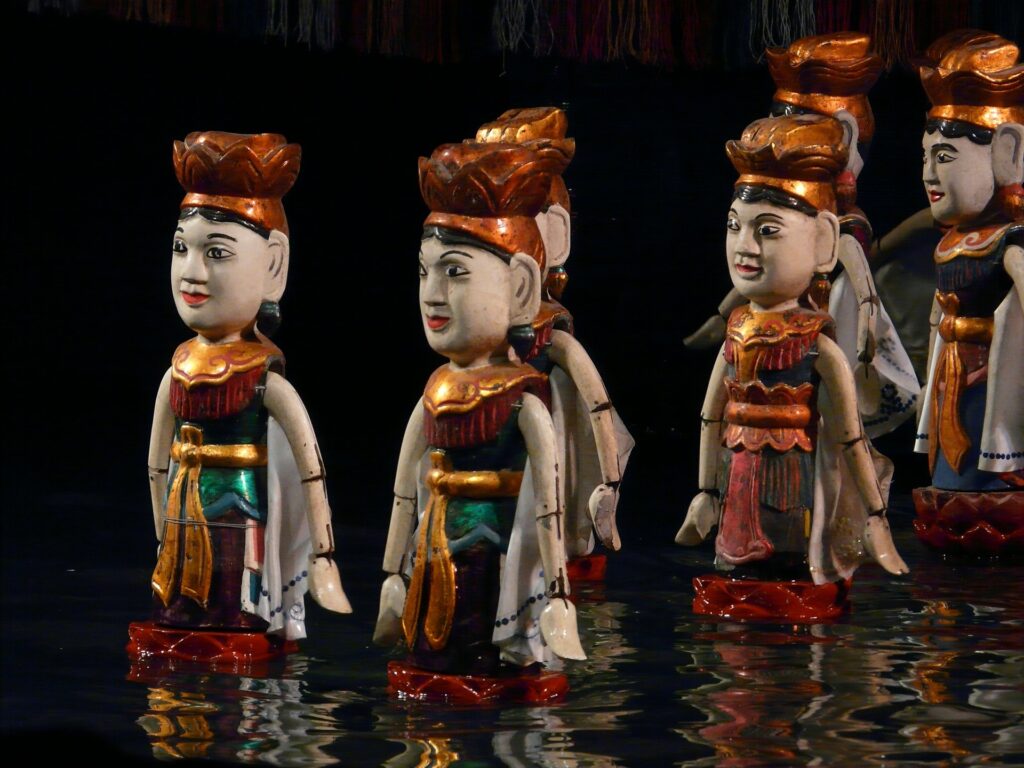Hello Budget Adventures! Today, I’m going to tell you everything you need to know before traveling to Vietnam. In my blogs, I talk about budget destinations and how to travel on a budget in any country. Vietnam is already one of the cheapest destinations and also a beautiful country. That’s why in this blog, I’m focusing on how to travel smoothly without getting scammed. So let’s start…
Arrival process
he first thing you need to know is the arrival process. You typically arrive at the airport. You can also arrive by train, but when you arrive here, you’ll notice that the airport is about 20 to 25 minutes away from the Saigon River area, which I consider central Saigon. From here, you’ll have the fast ferries that go up and down the Saigon River in this area. It used to be called Saigon, but after the war, they renamed it Ho Chi Minh City. Now it’s known as HCMC, Ho Chi Minh City.
Transportation
When it comes to getting around Vietnam, motorbikes are the primary method of transportation for most locals in Saigon and pretty much every place you go in Vietnam. You can rent a motorbike and explore Vietnam. Some adventurous travelers even ride from Saigon in the South to Hanoi in the North and everywhere in between on their motorbikes.
However, if you prefer not to ride a motorbike, you can also take trains. There are plenty of trains available, ranging in quality. For example, you can take a business class train from Saigon to Hanoi, or even from Da Nang to Hanoi. It’s a good idea to do some research and watch YouTube videos about taking trains in Vietnam.
Flying is also a convenient option for getting around Vietnam. I recently flew from Ho Chi Minh City to Da Nang for only $130 for a business class ticket on Vietnam Airlines. Another option is taking taxis or private tours, which can be affordable and convenient.
There are also plenty of buses available in Vietnam, including sleeper buses that offer affordable tickets. You can book tickets online, where you’ll also find options for VIP cabins, though sleeper buses are often preferred for comfort. Additionally, there are local buses and trains available for transportation within cities and regions.
here are some facts about Vietnam:
- Vietnam has a population of approximately 97 million people, making it one of the most populous countries in Southeast Asia.
- It is a coastal nation with interior mountains that border with Laos and Cambodia.
- Hanoi is the capital of Vietnam, located in the northern part of the country.
- Ho Chi Minh City, formerly known as Saigon, is the largest city in Vietnam, with a population of almost a million more people than Hanoi.
Let’s talk about some places to visit and things to do in Vietnam.
Starting with Southern Vietnam, you have Saigon, also known as Ho Chi Minh City, and Ocean City, which offer a plethora of activities and coastal beach towns to explore. Further south, you’ll find Ca Mau, located at the southernmost tip of Vietnam, offering unique experiences. In between these areas lies the Mekong River Delta, a fascinating region where you can spend a day or two exploring its vibrant culture and scenic landscapes.
Moving towards the central area of Vietnam, you’ll discover Da Nang, a modern city with ancient roots, and nearby Hoi An, a UNESCO World Heritage Site known for its well-preserved ancient town. These areas boast beautiful beaches and a rich cultural heritage, making them must-visit destinations.
Heading north from Da Nang, you’ll find Hue, once the imperial capital of Vietnam, known for its historical significance and imperial citadel. Further north, you can explore the charming city of Hanoi, the capital of Vietnam, with its bustling Old Quarter and cultural landmarks.
Don’t forget about Ha Long Bay, a UNESCO World Heritage Site located northeast of Hanoi, renowned for its breathtaking scenery of limestone karsts and emerald waters. It’s a favorite destination for many visitors to Vietnam.
Whether you’re exploring the vibrant cities of the south, the ancient towns of central Vietnam, or the natural wonders of the north, Vietnam offers a diverse range of experiences for travelers to enjoy.
Religion
When you visit Vietnam, you’ll notice that there are three main types of religion: Buddhism, Confucianism, and Taoism. Additionally, there are some Vietnamese-style religions that you may encounter, such as those centered around female goddesses. You’ll also find Catholicism present, with churches like the Notre-Dame Cathedral in both Hanoi and Ho Chi Minh City.
Best time to visit
Vietnam experiences two distinct seasons: the rainy season and the dry season. The rainy season typically lasts from around May to October, with September being part of this period. While it may not rain continuously, you can expect occasional rainfall, as I was experienced here in Saigon. The Mekong River area, which is about 2 hours away from Saigon, also receives rain during this time.
On the other hand, the dry season lasts from around October or November until May or June. During this time, there is significantly less rainfall, with more consistent sunshine.
Considering these seasons, the best time to visit Vietnam is generally during the dry season, as it offers better weather for exploring various destinations like Hanoi, Sa Pa, and Ha Long Bay. However, if you don’t mind a bit of rain, visiting during the rainy season can still be enjoyable, though it may limit some outdoor activities.
Scams in Vietnam
When it comes to safety and scams in Vietnam, it’s essential to stay vigilant, although it’s generally a safe place to visit. Petty theft, such as pickpocketing and scams, can occur, but violent crime threats are rare.
Scams are prevalent, and tourists should be cautious. For instance, I’ve encountered situations where people asked for money, and there have been attempts to deceive me regarding currency exchange. In one instance, I accidentally handed over a larger bill than intended, and the person attempted to keep the extra money. Another common scam involves individuals pretending that you’ve caused them harm, like bumping into them with an umbrella, in order to extort money from you.
Pickpocketing is another issue to be aware of, as I’ve personally experienced having my phone taken from my pocket while in Vietnam. It’s important to keep belongings secure, especially in crowded areas or tourist spots.
Additionally, be cautious with taxis, as there have been reports of taxi drivers using fake meters to overcharge passengers, particularly those who are unfamiliar with local rates. It’s wise to use reputable taxi companies or rely on trusted transportation services to avoid falling victim to such scams.
While the majority of people in Vietnam are friendly and welcoming, it’s crucial to remain vigilant and aware of your surroundings to avoid falling prey to scams or petty theft.
Foods
Talk about the local food. It seems like every day I was eating pho or I was eating some sort of bánh mì, which is a French baguette Vietnamese sandwich with pork, or stir-fry noodles. You can see braised ribs here, and this is a look at a typical night market ice cream. It’s basically rolled like this and put into a cup.
Currency and ATMs
Here, they use the Vietnamese dong as the currency, with 24,500 Vietnamese dong equaling $1. I’ve found that about 50% of places accept cards, but you’ll likely want to carry around a lot of cash. However, there’s a problem with getting cash. Many ATM machines here can be challenging to use. I’ve tried several different ATMs, and they often refuse to give me money. I’m not sure if it’s because I have a foreign card or if I’m at the wrong bank, but they usually just say “unable to process transaction.” So, I have to go find another ATM, hoping that one will work. Additionally, these ATMs often only dispense 2 million dong at a time. If you’re using that money for things like hotels and food, it can go quickly. You find yourself going from ATM to ATM, trying to get enough money out. Overall, I’d say it’s not the easiest place to access your money. I’ve found it easier in other countries like the Philippines or Thailand. However, it’s just the way it is, and it’s something you have to deal with when visiting Vietnam.
Accommodation
Now, let’s discuss the price of accommodation. It’s generally very affordable in many places, especially if you’re using apps like Hotels.com. I would say that’s probably the best way to avoid any hidden charges or fees that could be included in other booking methods. Whenever possible, try to use apps like Agoda, Booking.com, or Marriott and Hilton apps. Even airline apps like Vietnam Airlines can offer good deals.
However, when you start negotiating prices in person or paying with cash, you might encounter inflated prices. Even if you’ve agreed on a price beforehand, it’s not uncommon for additional charges to be added at the end, sometimes doubling the original price without your knowledge. It’s worth noting that while Vietnam is still an affordable destination overall, locals may sometimes apply hidden taxes or fees, especially to tourists who may not be aware of them.
Some useful Apps you must have
Let’s discuss some apps you should download when you arrive in Vietnam. Firstly, make sure to have apps for local airlines like Vietnam Airlines or VietJetAir on your phone, with your account registered beforehand. Additionally, messaging app Zalo is commonly used in Vietnam, even more so than WhatsApp. However, WhatsApp is also available here. For food delivery, consider apps like Foodpanda or doing some research on other available options.
Upon arrival at the airport, it’s advisable to get a SIM card with a Vietnam number right away. However, there may be compatibility issues if you have an iPhone 14 or iPhone 15, as they still use physical SIM cards instead of eSIMs. This might change in the future, though.
Lastly, I highly recommend downloading Grab, which is essential for traveling anywhere in Asia. It’s like the Uber of Asia, so it’s a must-have. Additionally, consider downloading Gojek for added convenience and safety during your travels.
Final thoughts
For my final review of Vietnam, I definitely look forward to going back there. I was only there for 2 weeks, but I’ll be back when it’s not so rainy. I highly recommend visiting during the non-rainy season. You can still go during the rainy season, but places like Hanoi will be very wet. Overall, it was a great experience, especially in the South. I really enjoyed exploring the smaller towns and villages, experiencing different types of cuisine, and interacting with the locals. For the most part, everyone was very friendly, although I did encounter some scams, which can happen anywhere. Nonetheless, I’m excited to return to Vietnam. I hope you guys enjoy your trip, and I’ll see you on the next one.





